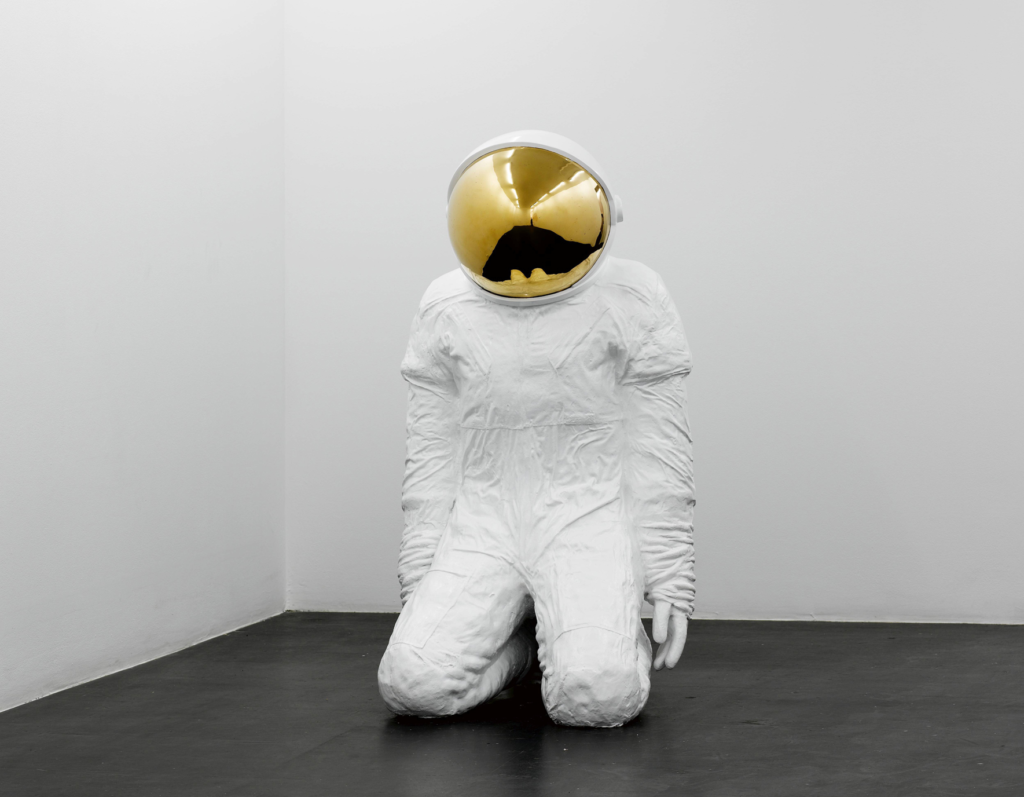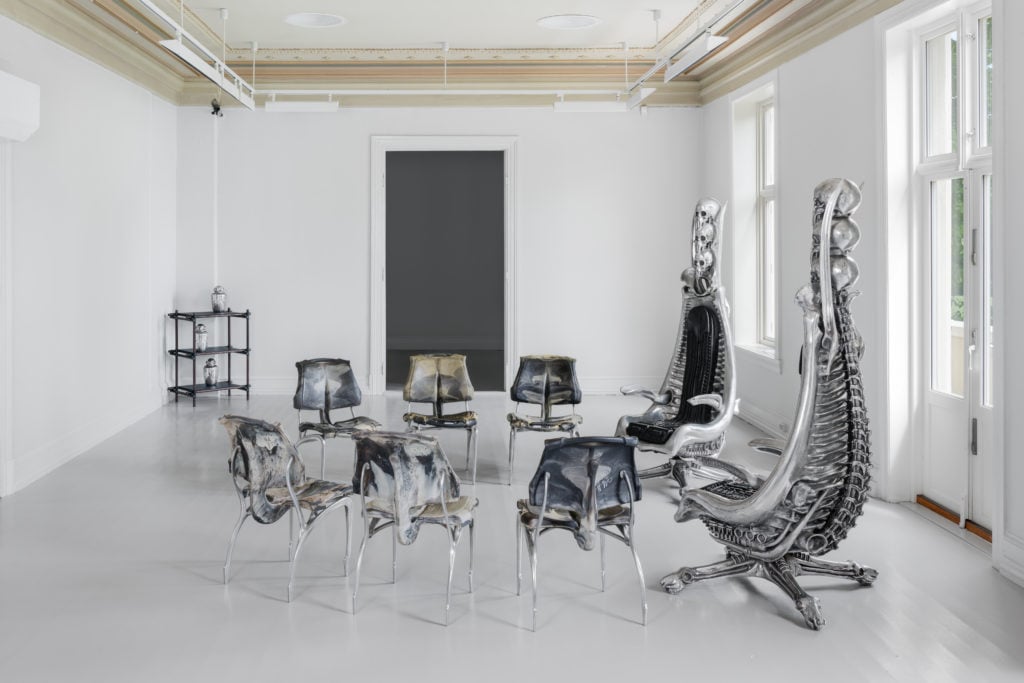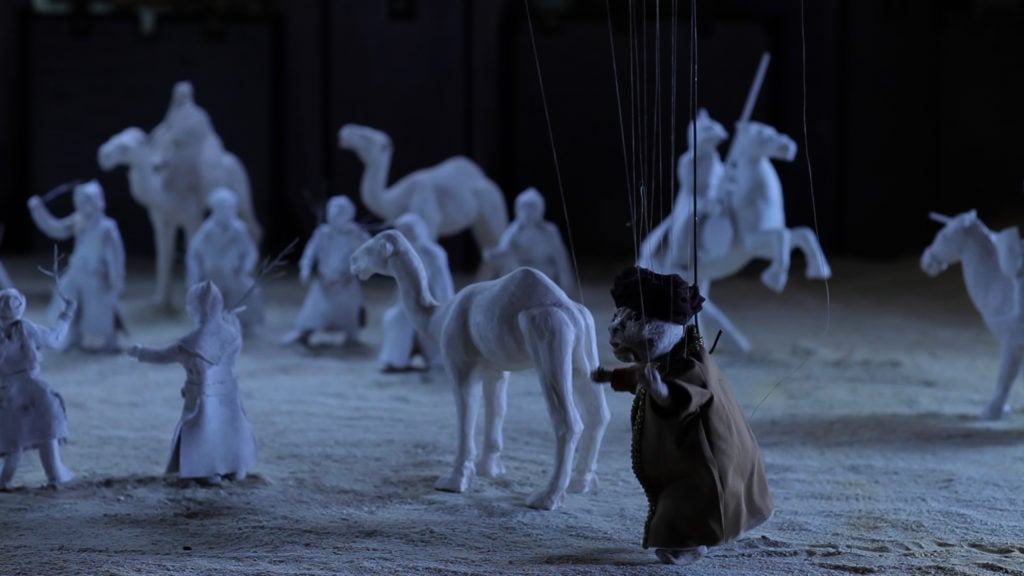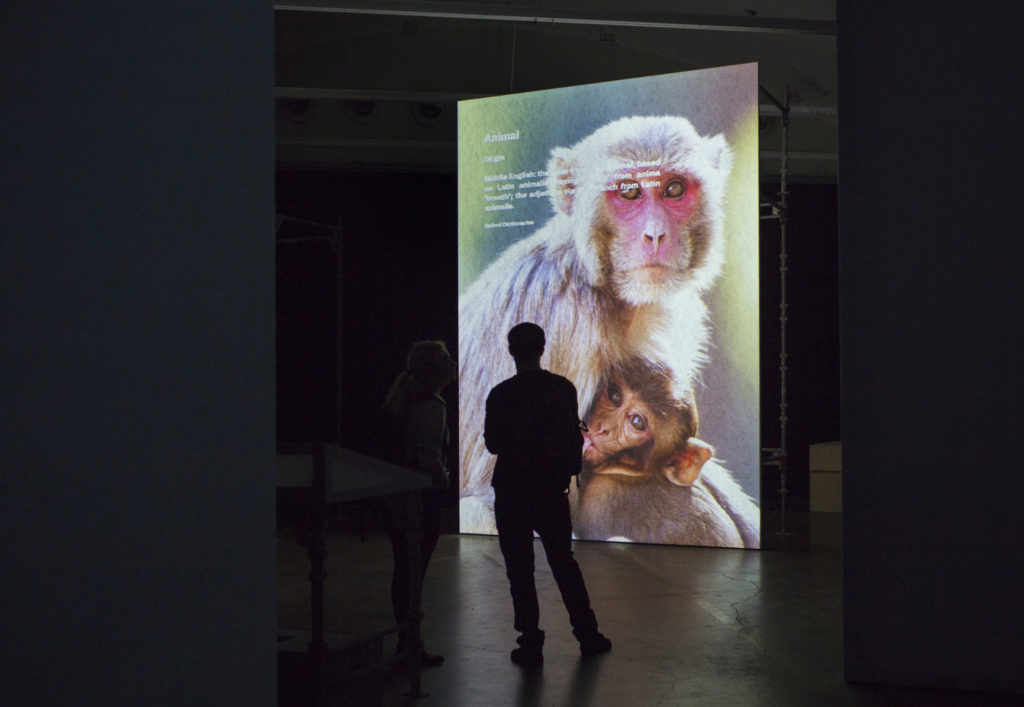Reviews
From H.R. Giger to a Fly-Breeding Machine, Speculative Futures Reign at the 9th Nordic Biennale
Momentum, the Nordic biennial, embraces all that's alien in its 2017 edition.

Momentum, the Nordic biennial, embraces all that's alien in its 2017 edition.

The sleepy town of Moss, Norway isn’t exactly at the top of most people’s list of must-visit destinations, but nevertheless, it has been the host of Scandinavia’s own biennale, Momentum, since 1998. The ninth edition, with the theme of “Alienation,” kicked off there this past Saturday at two main venues overseen by the umbrella institution Punkt Ø—the Momentum Kunsthall and Galleri F 15—and a handful of smaller exhibition locations dotted around the center of the coastal town, which lies on the eastern side of the Oslo fjord.
Despite Momentum’s relatively small size, this year’s edition of the Nordic biennial was curated by a team of five: Ulrika Flink, Ilari Laamanen, Jacob Lillemose, Gunhild Moe, Jón B.K. Ransu, who hail from Sweden, Finland, Denmark, Norway, and Iceland, respectively.
Each curator brought their own experiences and interests to the table—Flink, for example, was most interested in examining social structures and environmental issues; Ransu, in the idea of horror. Moe wanted to create sensory experiences and happenings; Lillemose, to break down the boundaries between contemporary art and other forms of expression like music, literature, or critical theory. And Laamanen, coming from a media-studies background, was focused on our “existential moment in time” marked by an increased technological connectivity that leads to an alienation from other people, cultures, and even our own bodies.
Above all, however, what they agreed on was the power of speculative narrative, and its ability to create stories, like science fiction, that force us to examine our present and its potential futures.

Installation view, H.R. Giger-designed chairs. Photo Istvan Virag.
Literal takes on alienation are entry points to understanding the exhibition, from a set of chairs designed by H.R. Giger to a piece of a meteorite that fell from the sky into Moss in 2006. Speaking to artnet News separately at the House of Foundation—a hip bookstore and coffee shop stocked with the latest literary and critical theory essentials that also served as a Momentum exhibition venue—the five curators elaborated on how and why the fantasy of the alien can push the viewer to discover something new on Earth.
“I think there is some truth to the idea that imagination is a means of survival; that you can start imagining better things, or other ways of seeing things. It’s so important that we do that right now, because reality is so horrific, and it’s hard to get away from it,” Lillemose said.
Among Lillemose’s curatorial contributions was “The Nazca Transmissions,” a sound piece by John Duncan, presented at the historic Parkteatret theater, built in the 1920s. The work, technically an album, begins with a narration by the artist explaining a correspondence he had with a German archaeologist who claimed to have taken recordings of sounds generated by the mysterious, ancient Nazca Lines in Peru. Duncan and the archeologist never met, but the former created, at the request of the latter, an interpretation of the recordings that emphasized their alien qualities.
According to the narrative, the archeologist stopped responding to Duncan’s emails, and all messages conveniently disappeared due to a hardware crash. Whether or not the interaction was completely fabricated is irrelevant; what matters is listening to the whooshing bass, shrill shrieking tones, and ominous groans in the composition. In doing so in the context of Momentum, listeners have time to reflect on their own views of what constitutes the alien, whether it’s extraterrestrial or closer to home, and what it might act, look, and, most importantly here, sound like.

Búi Aðalsteinsson, Fly Factory. Photo courtesy the artist.
Other works provide concrete solutions to problematic future narratives. Búi Aðalsteinsson’s Fly Factory, on view at F 15, is a large, stainless-steel appliance that can be fitted into a kitchen—or, for that matter, a spaceship—designed to breed flies for human consumption. Aðalsteinsson explains that a pâté can be made with the fly protein. (While samples weren’t available, upon arrival at the Kunsthall, journalists were given a taste with energy bars formulated by the artist containing cricket flour.)
Reflecting on the past, too, can offer just as much insight to the present as can imagining the future. Wael Shawky’s video, Cabaret Crusades: The Path to Cairo, on view upstairs at the same space, shows the Pope calling a group of crusaders—depicted with marionettes—to action, in a dark, cave-like setting. Besides the crosses on their robes, the scene calls to mind ISIS radicals, reading, for a viewer in 2017, almost like a parody of their propaganda videos.
This association is intentional. Flink points out that the number of Scandinavians joining ISIS has been over-represented compared to people from other parts of Europe. “In their mind, of course, they are going to join a holy cause, not unlike the Crusades,” she said.

Wael Shawky, Cabaret Crusades: The Path to Cairo (2012) Courtesy the artist and Sfeir-Semler Gallery Berlin/Hamburg.
Moss itself was once home to a monastery that treated crusaders on their journeys home from abroad—the monastery, Flink explains, is located on an island that can be seen from the top floor of the F 15.
“With the rise of anti-Muslim feelings in Scandinavia, I think this is a conversation we need to have,” said Flink.
Much of the other works depart from traditional forms of white-cube art. This is in part due to a Scandinavian phenomenon that, with such government support to arts and culture, artists think less about the market and more about ideas—leading to an increase in research-based projects.
“There’s more public funding, so artists can work more slowly, dig deeper into their research, and they don’t have to produce so many gallery works. It’s a different mode,” Laamanen explains.

Museum of Nonhumanity, Installation view at Suvilahti, Helsinki, (2016) Photo by Terike Haapoja, Courtesy Museum of Nonhumanity
A time-based installation called Museum of Nonhumanity exemplifies this research-based, market indifferent approach. The project of writer Laura Gustafsson and visual artist Terike Haapoja, it displays, through historic legal and personal documents, dictionary entries, and archival images, a global history of humans attempting to draw distinctions between themselves, animals, and objects through processes that have been used historically by governments to impose slavery, genocide, and inequality among people.
With a composite view of past and future, Momentum brings into question both the broken foundations of humanity, and the inevitable results of its trajectory, in a way that shows art’s power to be an arena for implementing change based on more just and open principles. In other words, it proves that the alien, far from being something to fear, might just be the solution.